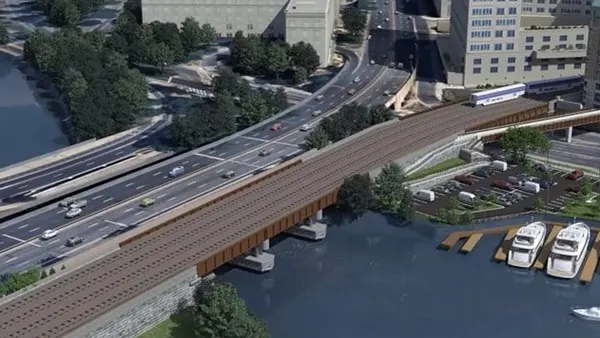Dive Brief:
- U.S. Customs and Border Protection (CBP) recently announced that a tech-enabled system for monitoring and securing the U.S. border has become a program of record for the agency.
- These systems, called autonomous surveillance towers, use renewable energy to provide around-the-clock tracking of remote border areas. Outfitted with radar equipment, the units scan the environment to detect movement, orient the camera to the location of the movement and analyze the imagery to autonomously identify items of interest, such as people or vehicles, according to a CBP press statement. Border Patrol agents are then alerted and have the opportunity to make the final determination on what the item is and if it poses a threat.
- Although not mentioned in the CBP announcement, the Washington Post reported soon afterwards that the Trump administration has awarded a contract for a rollout of the towers along the southern border. The five-year agreement with California-based AI firm Anduril Industries is worth hundreds of millions of dollars, according to the Post.
Dive Insight:
CBP first piloted the use of radar-equipped surveillance towers in early 2018 with four towers in the San Diego Border Patrol Sector, and has since purchased 56 additional towers. It plans to deploy 140 additional towers through 2022 to reach a total of 200 towers, it said. The Post article indicated that these are part of the Anduril contract.
Technology such as radar complements CBP's other initiatives to keeping the border safe, including barrier walls, CBP said, noting the many benefits of these mobile towers, including that they can operate off grid, have a small geographic footprint and minimize the impact to land owners and public land. They can also be re-located within two hours, providing frontline agents with a flexible system that “enhances situational awareness, effectiveness and safety,” the statement said.
“These towers give agents in the field a significant leg up against the criminal networks that facilitate illegal cross-border activity,” said Border Patrol Chief Rodney Scott in the statement. “The more our agents know about what they encounter in the field, the more safely and effectively they can respond.
The CBP announcement came just before the release of a government report that was critical of the Trump administration's focus on a physical barrier as the solution to security issues at the southern border.
Released July 14, the report from the Inspector General's (IG) Office of the Homeland Security Department said that technology-driven deterrents such as surveillance towers equipped with infrared cameras and radar as well as aircraft, ships and vehicles could be just as effective and cost much less than a border wall.
"We now are in a time where we can build this virtual border wall technology. We have that already," Rep. Henry Cuellar, a Texas Democrat from a border district where CBP proposes to build 121 miles of barriers told NPR in response to the IG's report. "But there's political pressure from the White House. They're saying, 'Build me the wall. Get me miles.'"
It is unclear how the CBP will pay for the new technology. Despite rulings from lower courts that military funds could not be diverted to pay for building the border wall, the Supreme Court ruled earlier this month that construction could continue.














